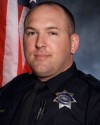Police Work, Politics and World Affairs, Football and the ongoing search for great Scotch Whiskey!
Friday, September 30, 2016
Women really are getting short changed....
In honor of libtards, I went out, found a homeless man, and gave him a dollar. I then saw a homeless woman and gave her 73 cents.
Labels:
Comedy
Shotguns, buckshot and slugs are not "antiquated"
I saw this on the news this morning and it peaked my interest.
Respectfully Chief Oates, you are incorrect. Shotguns are not "antiquated," they are another level of deadly force.
In my Tahoe I carry my 870 Remington and my AR-15. I also have in the back a bean bag shotgun and I've used it when a man was holding a knife up to his stomach. All these weapons have use.
While a patrol carbine is a great asset for longer ranger or multiple targets at closer range, they fire one round. A shell of 00 buckshot fires 9 ball bearings and spreads them out. I have a man on meth rushing me with a knife, the bean bag is worthless (in all honesty, it is intermediate force, not deadly). A buckshot blast will hit him multiple times at once, knocking him down. And buckshot is no comparison to slugs.
I fully support the use of bean bag shotguns as an intermediate weapon, but to be honest, the story is a bit misleading. You are replacing lethal force (shotgun) with deadly force (carbines) and fielding the bean bag shotgun (intermediate force). Might I suggest you allow your officers to carry the 870 both ways. People sometimes ask me as I'm carrying my shotgun and rifle to my Tahoe, "You going to fight a war?" My answer, "No. But better to have and not need, than need and not have."
‘Antiquated’ police shotguns being replaced with ones that fire bean bags
Miami Beach is tossing its remaining 18 shotguns — antiquated relics to modern-day policing (emphasis mine) — and replacing them with 100 new shotguns that fire bean bags instead of bullets.
The new weapons, in easily identifiable orange, are less lethal than the shotguns they are replacing and more flexible and accurate. To Miami Beach Police Chief Dan Oates, the bean-bag bullets are simply a new addition to the city’s non-lethal arsenal.
“We’re taking lethal shotguns off the street. They’re antiquated weapons,” Oates said.
Oates said the new shotguns with bean bag bullets — which are gaining popularity among police forces nationwide — are accurate within 70 feet. That’s a considerable difference from the 12 feet an officer needs to be within to use a Taser effectively on a subject.
Earlier this year, Bal Harbour and other local police department began retrofitting their shotguns with bean bags.
Policing has evolved since shotguns were popular in the 1970s and ‘80s. More recently they have been replaced with semi-automatic rifles that are lighter, more flexible and much more accurate in deadly situations.
Miami Beach only has 18 shotguns left in its arsenal. The plan is to have 40 of the new weapons in use by November, the rest afterward. Oates said training takes about six weeks. Miami Beach has 140 of the deadlier rifles on the streets...
Respectfully Chief Oates, you are incorrect. Shotguns are not "antiquated," they are another level of deadly force.
In my Tahoe I carry my 870 Remington and my AR-15. I also have in the back a bean bag shotgun and I've used it when a man was holding a knife up to his stomach. All these weapons have use.
While a patrol carbine is a great asset for longer ranger or multiple targets at closer range, they fire one round. A shell of 00 buckshot fires 9 ball bearings and spreads them out. I have a man on meth rushing me with a knife, the bean bag is worthless (in all honesty, it is intermediate force, not deadly). A buckshot blast will hit him multiple times at once, knocking him down. And buckshot is no comparison to slugs.
I fully support the use of bean bag shotguns as an intermediate weapon, but to be honest, the story is a bit misleading. You are replacing lethal force (shotgun) with deadly force (carbines) and fielding the bean bag shotgun (intermediate force). Might I suggest you allow your officers to carry the 870 both ways. People sometimes ask me as I'm carrying my shotgun and rifle to my Tahoe, "You going to fight a war?" My answer, "No. But better to have and not need, than need and not have."
You can't trust anyone anymore....
This is a quote from one of my officer's reports:
Used to be when a man made a deal with you, you shook hands and it was guaranteed. You just can't trust anyone these days! :<)
"COMP#1 STATED THAT HE GAVE THE SUSPECT $8 DOLLARS TO PURCHASE MARIJUANA FOR HIM, COMPLAINANT STATES THAT THE SUSPECT NEVER BROUGHT HIM THE MARIJUANA AND THAT HE DID NOT GET HIS $8 DOLLARS BACK."
Used to be when a man made a deal with you, you shook hands and it was guaranteed. You just can't trust anyone these days! :<)
Another example of the inmates running the asylum again....
In the year of the idiot celebrity trying to make themselves relevant, we now have the "wanna-be's," others who wanna be like Colin Kaepernick. I've seen morons get free publicity, but this was a bit personal. This is East Jefferson Stadium in Metairie LA, where I spend a lot of my misguided high school yute. The Air Force Junior ROTC detachment, LA Squadron 62, is (at least was, I'm assuming they still are) on the bottom of the visitor's side.
Well, one of local high schools made news when their team kneeled when the National Anthem was playing.
Yo, numnuts, maybe you should get your head out of your ass. They may have a "right" to show disrespect to the nation, but you know what they don't have a "right" to do. Play on the team.
I recall Coach Sara back in my Grace King days and his ass would take nothing like this. If one of his players had pulled that, the student would suddenly find himself standing. Sara would grab him by the next and hang him until the anthem is over. And then tell him, "You don't want to stand for the National Anthem, fine, go rest yourself on the bench for the game. You embarrass your team, school, me and yourself again like that, turn in your uniform..." That, Mr Joseph, his how your handle this issue.
Now since Beyonce started her publicity crap in the Super Bowl, I've said to officers, don't work details for her fat ass. She can contract out hood rats to protect her sizable butt. Looks like my buddies in Blue are doing just that.
Thank you Sheriff Norman, you and your deputies are showing how it's done. Those deputies have standards, there are some things they won't doe even for money. To the coach at Bonnabel, get your team under control. You're allowing this, the inmates are running the asylum.
Well, one of local high schools made news when their team kneeled when the National Anthem was playing.
Police Refusing To Cover HS Football Game After Students Protest National Anthem
When the students decided to protest the National Anthem at a Louisiana high school, the local police were having none of it.
The deputies in Jefferson Parish refused to work the extra shifts needed to provide security at Bonnabel High School, furious at the students’ un-American antics.
The protest even took the school superintendent by surprise.
“I was a bit taken aback at first. Keep in mind, I know what is happening nationally with some of the protests that’s happening across the country,” Jefferson Parish Public Schools Superintendent Isaac Joseph said, PJ Media is reporting. “They do have a right, and legally we do not have any right to punish or offer any sanctions against the team or team members....”
Yo, numnuts, maybe you should get your head out of your ass. They may have a "right" to show disrespect to the nation, but you know what they don't have a "right" to do. Play on the team.
I recall Coach Sara back in my Grace King days and his ass would take nothing like this. If one of his players had pulled that, the student would suddenly find himself standing. Sara would grab him by the next and hang him until the anthem is over. And then tell him, "You don't want to stand for the National Anthem, fine, go rest yourself on the bench for the game. You embarrass your team, school, me and yourself again like that, turn in your uniform..." That, Mr Joseph, his how your handle this issue.
Now since Beyonce started her publicity crap in the Super Bowl, I've said to officers, don't work details for her fat ass. She can contract out hood rats to protect her sizable butt. Looks like my buddies in Blue are doing just that.
...Law enforcement officers in Jefferson Parish were not happy.
“My understanding is, we’ve had some officers that said they will not work the Bonnabel High football games,” (Jefferson Parish LA) Sheriff Newell Normand said, Fox8Live is reporting. “I understand why, in light of Colin Kaepernick’s comments, specifically when he says, ‘Cops are getting paid leave for killing people.’ That’s not right, that’s not right by anyone’s standards. The fact of the matter is we risk our lives each and every day for the safety and security of our constituency throughout this country.”
Some of the officers are making their own voice heard and not signing up to work security detail.
“That is a voluntary detail, so I suspect I will have some officers refuse to work the Bonnabel High School games,” Normand said. “The same way that the Bonnabel players have every right to kneel during the national anthem, my officers have every right not to volunteer to work the Bonnabel high school football game.”
Normand says he won’t force the officers to work if they feel the it disrespects their job.
“That fuels the disappointment in my officers when they see this happen, and I can fully understand their disappointment and frustration,” Normand said. “When they’re on the clock and they’re working for me, they’ve got to do what they’ve got to do, because that’s what they’re hired to do. That’s not what this is – this is a voluntary detail where they volunteer to work this extra detail separate and apart from what they’re hired to do.”
Thank you Sheriff Norman, you and your deputies are showing how it's done. Those deputies have standards, there are some things they won't doe even for money. To the coach at Bonnabel, get your team under control. You're allowing this, the inmates are running the asylum.
Sunday, September 25, 2016
What's going on in the World Today: 160925
HYPERLINKS MAY REQUIRE AN EMAIL:
USA
NOTHING SIGNIFICANT TO REPORT
AFRICA
Polio: The Disease Nigeria Can't Seem to Shake
By Rebecca Keller
Ridding the world of polio is going to take a little longer than originally expected. On Aug. 11, the World Health Organization confirmed at least two new cases of children who have been paralyzed by a wild-type poliovirus in Nigeria's northeastern Borno state. Prior to the revelation, Nigeria — once one of only three countries left where polio was endemic — was on the path to becoming polio-free by 2017.
When examining outbreaks and epidemics from a geopolitical perspective, we often look at how the disease in question might disrupt economic activities, such as workforce productivity or the movement of people and goods. From there, we determine whether the impact of the disease will be notable enough to influence political, economic or social decisions. But in the case of polio, perhaps the more relevant question is how those decisions have aided — or prevented — the virus's eradication….
ASIA
N. Korea Missile Test Adds to 'Military First' Celebration
ASSOCIATED PRESS PYONGYANG, North Korea — Aug 25, 2016
North Korea marked its "Military First" holiday on Thursday with mass dancing, outdoor concerts and boasts of a successful — and potentially game-changing — submarine-launched ballistic missile test it hopes will serve as a warning to Washington and Seoul to stop holding joint military exercises Pyongyang sees as a dress rehearsal for invasion.
Television news broadcasts and the front pages of morning newspapers Thursday showed images of the launch, conducted in the early hours the day before. The test sent a "Pukguksong" missile soaring from a submerged position off the North's port city of Sinpo. It flew an estimated 500 kilometers (310 miles) toward the seas around Japan, the longest distance it has yet achieved in a submarine launch…
The Double-Edged Sword of Japanese Remilitarization
PIC https://www.stratfor.com/sites/default/files/styles/stratfor_large__s_/public/main/images/japan-military.jpg?itok=K66Lzpkx
With help from the U.S. Marine Corps, Japan is converting its Western Army Infantry Regiment into a unit specially trained in amphibious operations, bringing the country one step closer to remilitarization. (FREDERIC J. BROWN/AFP/Getty Images)
Summary
Japan may be picking up the pace on its long and steady path toward normalizing its military. The Yomiuri Shimbun newspaper reported Aug. 14 that the Japanese intend to develop a new vehicle-mounted surface-to-ship missile with an enhanced range of 300 kilometers (185 miles) by 2023. When deployed from islands of the southern Ryukyu island chain, the missile will be within range of the Senkaku Islands. On its own, the new missile's development would not be a singularly important event; the Japanese, after all, have long fielded an array of anti-ship missiles. But Japanese media have hinted that the missile will have a built-in capacity to strike at land targets. If the suggestions are accurate, Japan may be cultivating an offensive capability that it has forgone in the past, potentially putting one of its main military allies, the United States, in a difficult position…
EUROPE
Gazprom Soldiers on With Nord Stream II
Summary
Editor's Note: Stratfor closely monitors the ebbs and flows of world energy. Aside from production, the transportation of crude oil, natural gas and petroleum products is of paramount concern for oil-producing nations. For energy consumers, transit routes are indispensable lifelines. A huge amount of the world's energy is transited through pipelines, across the Eurasian landmass in particular. In this periodic series we will examine some of the most geopolitically significant pipelines running through Europe and Asia.
Poland has achieved a significant victory in its battle against German and Russian energy collaboration. Daunted by Polish regulations, five international giants in the natural gas industry announced Aug. 12 that they had pulled out of an agreement to join Russian state-owned gas company Gazprom in the Nord Stream II AG consortium. The consortium, which Gazprom currently owns in its entirety, will oversee the construction and operation of the controversial Nord Stream II pipeline, set to enter service in 2019. The pullout leaves Gazprom to move forward with the 55 billion-cubic-meter natural gas pipeline project, estimated to cost between $8 billion and $11 billion, by itself, and it could have serious consequences across Northern and Central Europe. Even so, Gazprom will persevere...
Greece: European Union Increases Migrant Assistance
A Sept. 10 EU decision will provide an additional $129 million to organizations assisting migrants and refugees in Greece with schooling, food, heating and housing for minors, according to EU officials, AP reported. With winter weather approaching, approximately 60,000 migrants are trapped in Greece because of border closures. As conflict throughout the Middle East and North Africa continues unabated, the influx of migrants from the war-torn region is putting more and more strain on Europe.
France: Migrants In Calais To Be Dispersed Across Country, President Says
French President Francois Hollande said Sept. 24 that thousands of migrants living in the shantytown near the port city of Calais in northern France would be dispersed across the country, Reuters reported. About 9,000 places will be made available at "reception and orientation centers" for migrants living in the camp, Hollande said after visiting a facility in Tours. The migrants who fit the asylum criteria will be allowed to stay, while those who do not will be deported, he said. The camp in Calais, which Hollande is to visit Sept. 26, has become a symbol of the migrant crisis in France at a time when immigration is seen as a key theme in next year's presidential election. Migrants from the camp regularly clash with the police as they try to make their way to Britain via the port.
MEXICO/LATIN AMERICA
NOTHING SIGNIFICANT TO REPORT
AFGHANISTAN
NOTHING SIGNIFICANT TO REPORT
CHINA
A Test of China&'s True Intentions in Space
Summary
Beijing is in the process of modernizing and enhancing its space launch capabilities. During the week of June 27, China carried out the inaugural launch of its Long March 7 system, part of a new generation of rocket systems that include the Long March 5 and Long March 6. The Long March 7, using the most powerful rocket ever built in China, will be the workhorse of the nation's future space missions, eventually carrying taikonauts and supplies into orbit for its planned space station. Though the launch was a notable achievement, the secondary payload it carried — the Aolong-1 or "Roaming Dragon," a small satellite designed to collect space debris with a robotic arm — has stirred up familiar speculation about the true nature of China's space program...
China's Coal Industry Is in Trouble
China's Sichuan Coal Group, a provincial state-owned enterprise, is just one in a sea of small to middling Chinese coal businesses on the perpetual verge of bankruptcy. The company announced July 27 that it had completed a nearly 1.06 billion-yuan ($159.5 million) bond payment that it had missed in June, a rare piece of positive news from an industry battered by sluggish demand, low coal prices and the central government's increasingly stringent attempts to cut excess capacity. But Sichuan Coal's payment, which averted a bond default, hardly augurs an upswing for the industry that has powered China for a century and that still supplies 64 percent of the country's energy mix today....
China Is Fueling a Submarine Arms Race in the Asia-Pacific
With China plowing money into its military machine and making aggressive claims to disputed island chains, Beijing’s regional rivals are investing in the one weapon that can undercut the increasingly potent People’s Liberation Army. Across South and East Asia, China’s neighbors are spending heavily on submarines, purchasing silent diesel-electric machines capable of slipping past Chinese defenses.
So when the Australian reported this week that detailed technical plans — totaling some 20,000 pages — for a French-made submarine had leaked from the manufacturer, the reaction was one of widespread panic. The leaked plans outlined in minute detail the capabilities of a Scorpene-class vessel purchased by India, and New Delhi immediately demanded that French authorities investigate how the respected DCNS shipbuilder had lost control of the plans. In Australia, where DCNS has been tapped to build the country’s next-generation submarine, officials warned the contractor needed to step up security.
The sharp reaction reveals the central place of submarines in Asia’s accelerating arms race. Submarines are one of the few weapons with which countries warily eyeing Beijing’s military buildup can send a signal that they do not plan to stand idly by as China asserts its interests through coercion and unilateral moves, particularly in the South China Sea. Australia, Vietnam, Malaysia, Indonesia, Japan, and India can do little about the formidable radar installations and missile batteries dotting China’s coastline, as well as its expanding fleet of naval ships and warplanes, but they can build vessels capable of slipping underneath Beijing’s naval cordon.
That’s because while China has spent billions of dollars upgrading many aspects of its armed forces, from fighter jets to naval destroyers, its ability to carry out anti-submarine warfare still lags behind, said Bryan Clark, a senior fellow at the Center for Strategic and Budgetary Assessments. And that has left a tactical opening for China’s rivals.
“These countries are really seeing these submarines as the capital ships of their navies,” said Clark, a former U.S. Navy submariner and advisor to the service’s top brass.
IRAN
Iran: With Russian Help, Construction Begins On Second Nuclear Plant
The Iranian government in conjunction with Russian atomic energy agency Rosatom began construction Sept. 10 on the nation's second nuclear power plant, located in Bushehr, AP reported. The head of the Atomic Energy Organization of Iran, Ali Akbar Salehi, specified that the International Atomic Energy Agency would monitor the project to guarantee that it is in line with the Non-Proliferation Treat. Russia will supply the fuel for the reactor and remove the spent fuel. Iran's other nuclear power plant is also located in Bushehr and went online in 2011. The new $8.5 billion project will involve two power plants with a total capacity of 2,114 megawatts of electricity. Construction on the second will begin in 2018. Tehran hopes to transition the country's electricity grid away from hydrocarbons, replacing 20,000 megawatts of the nation's total 75,000 megawatt capacity with nuclear power by 2030. The new plant represents a key step in the landmark nuclear deal between Iran and six world powers struck in 2015 and is also a part of Russia's broader strategy to increase influence through nuclear power projects.
China: Air Force Holds Drills In Western Pacific Ocean
China's air force said Sept. 25 it had flown more than 40 bombers and other fighter planes through a strait between Japanese islands on their way to drills in the western Pacific Ocean, Reuters reported. Chinese aircraft did the exercises after flying over the Miyako Strait, a body of water between Japan's islands of Miyako and Okinawa. The drills were for the air force to protect China's sovereignty and national security, China's air force spokesman said. China's navy has often used the Miyako Strait, a key strategic route for the military, as a pathway from eastern China to the Pacific Ocean. The deployment comes as China increasingly asserts itself in territorial disputes in the South China Sea and East China Sea. China's ties with Japan have been strained by its territorial disputes in the East China Sea.
IRAQ
NOTHING SIGNIFICANT TO REPORT
ISRAEL
Submarines: Narco Subs Threaten Israel
August 26, 2016: Apparently the long-feared appearance of South American “narco-subs” (drug smuggling submersible vessels) in Europe is imminent. This comes from revelations that Israel is deploying new sensors and techniques to find these small, easily built vessels that they fear will be used to attack Israel’s new offshore natural gas fields. Israel is not talking about how they found out.
The United States has been dealing with these vessels for over a decade and is apparently sharing with Israel what it knows about finding these vessels. The Israelis have an advantage in that they have a less restrictive ROE (Rules of Engagement) and, while the United States never has enough surface ships or long-range helicopters to make sure that long-range sensor contacts are actually narco-subs and not some legal vessel, the Israelis can warn all maritime traffic in their coastal waters to identify themselves or risk being fired on from the air or from surface craft. A number of the latter are unmanned, like the new Seagull USV (unmanned surface vessel) that can fire wire guided torpedoes.
Most of these narco-subs are still "semi-submersible" type vessels. These are 10-20 meter (31-62 foot) fiberglass boats, powered by a diesel engine, with a very low freeboard and a small "conning tower", providing the crew (of 4-5), and engine, with fresh air and the ability to safely navigate. A boat of this type was, since they first appeared in the early 1990s, thought to be the only practical kind of submarine for drug smuggling. But since 2000 the drug gangs have developed real submarines, capable of carrying 5-10 tons of cocaine. These subs cost a lot more than semi-submersibles and also don't require a highly trained crew. These subs borrow a lot of technology and ideas from the growing number of recreational submarines being built. Only three of these true subs have been found and apparently they are not sufficiently more effective to justify their higher cost…
RUSSIA
The Cost of Closing Russia's Budget Gap
After two years of recession, the worst may be over for Russia's economy, but not for its leaders. As the year approaches its final quarter, the Russian government is still trying to finalize its 2016 federal budget. Though the budget has long been a point of contention in the Kremlin, this year's budget battle has been especially divisive amid dwindling funds and disappearing options for spending cuts. To make matters worse, just weeks before September's parliamentary elections — a bellwether for the ruling United Russia party ahead of the 2018 presidential vote — Russians are protesting their economic straits in droves. Facing an unhappy public and a $31 billion shortfall in the current budget drafts, Prime Minister Dmitri Medvedev has been given a tall order: plug the gaping hole in the budget while also allowing for billions more in social spending...
The Long Arm of Russian Intelligence
By Scott Stewart
After Russian 800-meter runner Yulia Stepanova and her husband exposed the systematic state-sponsored doping regimen pervasive in Russian athletics, the couple and their young son fled to the United States, fearing for their safety. Now it seems that their fears were well founded. The World Anti-Doping Agency (WADA) announced Aug. 13 that hackers had illegally accessed Stepanova's account in an agency database, which contains, among other personal information, her family's address in the United States. (Athletes are required to maintain current address information in the WADA system to facilitate unscheduled, off-competition drug testing.) WADA also noted that no other accounts had been accessed in the data breach, suggesting that Stepanova, who has since moved again with her family, was the specific target of the hack...
SYRIA
U.N. Claims Syrian Regime and Islamic State Used Chemical Weapons
A U.N.-authorized investigation has determined that both the Assad regime and the Islamic State used chemical weapons in Syria in recent years, the first time that the United Nations has officially assigned blame for the use of outlawed weapons in Syria’s five-and-a-half year conflict.
Syrian President Bashar al-Assad’s air force carried out at least two chemical weapons attacks against opposition-controlled towns between 2014 and 2015, while extremists from the Islamic State shelled a Syrian village with mustard gas in the summer of 2015, according to the findings of a joint investigation by the United Nations and the world’s chemical weapons watchdog. A copy of the report, which is confidential, was obtained by Foreign Policy…
MIDDLE EAST GENERAL
The UAE Spends Big on Israeli Spyware to Listen In on a Dissident
When a government seeks to rein in a political opponent by listening in on his calls, reading his text messages, and spying on his meetings, how do they go about doing so? In the case of the United Arab Emirates and pro-democracy activist Ahmed Mansoor, they sent him a short text message.
“New secrets about torture of Emiratis in state prisons,” the Aug. 10 and 11 SMS messages to Mansoor read. The texts included a link, and had Mansoor clicked it, his phone would have turned into a powerful surveillance tool for an entity that researchers believe is the Emirati government. Pegasus, the software used against Mansoor, allows its operator to record phone calls and intercept text messages, including those made or sent on nominally encrypted apps such as Viber and WhatsApp. It can mine contact books and read emails. The software can also track its subject’s movements and even remotely turn on the phone’s camera and microphone.
The cyber-offensive against Mansoor was detailed in a new report by Citizen Lab, a research outfit based at the University of Toronto that has extensively chronicled foreign governments’ use of hacking for surveillance. The report shows the spies targeted Mansoor’s iPhone using so-called zero-day vulnerabilities, flaws that Apple had been unaware of. Citizen Lab alerted the company to the flaw earlier this month; the Cupertino, California-based tech giant issued a patch on Thursday, about 10 days after being alerted, an unusually quick response.
Mansoor may have been one of the most high-profile people targeted with Pegasus, but he won’t be the last. As technology like Pegasus comes into wider use and governments become more aware of just how powerful a surveillance tool a smartphone can be, other dissidents, human rights activists, and journalists could come under similar attack. “These dissidents or high-value targets [give] us all a taste of the future,” said Bill Marczak, one of the report’s authors and a senior research fellow at Citizen Lab…
OPEC: Saudi Arabia, Iran Cannot Agree on Output
Iran has reportedly rejected an offer from Saudi Arabia that could have led to an oil production deal at next week's informal OPEC meeting. Riyadh had reportedly proposed to dial back production to around 10.2 million barrels per day, similar to what it was producing earlier in the year before a summer hike took production to 10.6 million bpd. But the offer was contingent on Iran freezing its own production at 3.6 million bpd in return...
MISC
How to Pack for Emergency Situations
How to Pack for Emergency Situations
By Scott Stewart
We often talk about the need for people to prepare for emergency situations. In relation to personal preparedness, I'm frequently asked, "What equipment do you carry with you?" In fact, several people raised that exact question last week when I was teaching a course on travel security. As I replied, it occurred to me that Stratfor readers might also be interested in my answer. So, if you'll indulge me, I'd like to divert a little from the usual Security Weekly format to discuss it in the hope that readers will come away better prepared for emergencies.
Fire Protection
As we've discussed in the past, fire is a vastly underappreciated threat. Far more people die each year from fires — mostly from smoke inhalation — than from terrorist attacks. But as we've seen in places such as Benghazi and Mumbai, fire can be used as a weapon during an attack.
Because of this, I recommend that people carry a smoke hood whenever possible. Having a smoke hood can mean the difference between living or dying in a fire. Many people lose sight of the fact that U.S. Ambassador Christopher Stevens and communications officer Sean Smith died from smoke inhalation during the Benghazi attack. Had their safe-house been stocked with smoke hoods as required by U.S. State Department regulations, both men would have likely survived the attack on their building. Smoke can prove deadly not only inside buildings but also in buses, aircraft, and train or subway cars. We have repeatedly seen people die from smoke inhalation after fires or bombing attacks; smoke hoods can give people trapped in such situations enough air to escape…
Bloody Lessons Learned at the Somme
Summary
A tranquil river basin in northern France will forever be associated with some of the most vicious and costly fighting of World War I. The terrain around the Somme River provided the battleground for a confrontation between elements of the German army and an Allied force spearheaded by the French and British. At the beginning of 1916, the Western Front was locked in a stalemate, blocked by the opposing battlements running from the North Sea to the Swiss border. The Allies sought to break the German defenses and to relieve pressure on the French at Verdun, wearing down the Germans in preparation for a decisive victory expected in 1917. It was hoped the July 1 Somme offensive would provide that break and set the stage for the closing acts of the war.
While the French achieved some success on the opening day of the attack, the British Fourth Army suffered staggering losses — the worst ever in a single day of combat for the United Kingdom. Claiming around 60,000 British casualties, including almost 20,000 fatalities, the Battle of the Somme left an indelible mark on the psyche of a nation, no less diminished a century after the fact. By the offensive's conclusion on Nov. 18, 1916, over a million were dead or wounded. Yet for all its appalling losses, the armies and men who fought to the end of that particular battle ushered in new attitudes and approaches to warfare...
Identifying a Mundane but Deadly Threat
Forecast
Identifying choke points — areas that are difficult to avoid and therefore often used — along commutes and other frequently traveled routes can mitigate the risk of attack.
Changing up daily patterns, including departure times, modes of transportation and routes, can make it more difficult for attackers to plan an assault.
Security teams can use the same surveillance measures that assailants often use in plotting attacks to identify vulnerabilities in potential targets' normal routines.
Analysis
In a world of new and evolving threats lurks a hidden danger, whose peril lies in its very consistency: routine. Pavel Sheremet, a Belarusian journalist and commentator, recently fell victim to his own daily patterns. Just before 7:40 a.m. on July 20, he got in his partner's car to drive the few kilometers from his neighborhood in central Kiev to Radio Vesti, where he hosted a morning radio show. Parking in Kiev — as in any big city — can be tricky, and Sheremet had to park at the top of Ivan Franko Street, a few hundred meters from his apartment. From there, he made a U-turn and headed to the busy intersection with Bohdan Khmelnytsky Street, which would take him to a major thoroughfare. As Sheremet turned left onto Bohdan Khmelnytsky Street, an explosion struck his vehicle. Though emergency response teams arrived at the scene within minutes, Sheremet succumbed to the injuries caused by the blast shortly after the attack...
Labels:
Afghanistan,
Africa,
Asia,
Europe,
Intelligence,
Iran,
Iraq,
Israel,
Mexico,
Middle East,
Russia,
Syria,
USA
Saturday, September 24, 2016
Republican Jesus is right on here....
For even when we were with you, this we commanded you, that if any would not work, neither should he eat.
2 Thessalonians 3:10
I'll say it. If you have money for narcotics, you don't need food stamps.
Friday, September 23, 2016
Another example of how children are not being raised....
From the Clinton News Network:
Actually it's according to the driver of the vehicle.
Actually, the quotes are "Don't f&*(ing touch me!," and "Get the f^&* off of me." CNN, please, try and be accurate for a change.
I can believe the liar, err lawyer, or my lying eyes. I'll believe my lying eyes.
Mr Ficker, you're giving lawyers a bad name, and that is saying something. Those officers showed an incredible amount of restraint.
You are correct in that sir. And you should be proud of your men in this case, they were very restrained and professional.
Well mom, I know you're keeping the lie up as your liar, err arrorney said, you're looking for a big payoff. Who knows, the state of Baltimore may pay you. But if you are so concerned about your child why didn't she want to call you. The cops tried to get your name and number, her dad's information from her, asked a stranger if he knew you. Sounds like they were concerned about your child. A lot more than you, quite frankly.
No Resisting Arrest?
For all the YouTube lawyers out there with there law degrees from BLM and CNN, please let me explain. One, she in a child, the officers are responsible for her safety if a parent or other reasonable adult (e.g. aunt/uncle/close family friend) is not there. Two, she is involved in an auto accident, she had to provide her information for the report. Three, assume the officers had let her go and she is injured. Say she had an injury that retires hospitalization but because she's not there, she get ill and dies or has created complications. That leaves the city open for massive liability.
BTY mom, wash your kid's mouth out. If I had spoken to a cop like that at 15 I wouldn't have to worry about the police. My mother would have kicked my ass!
Good works officers. Be safe out there.
Thanks Jude L for the link.
Video shows police pepper-spraying teen girl
(CNN)Body-camera videos of police pepper-spraying a 15-year-old girl in Maryland have touched off an uproar.
Police released the two videos to the public Thursday and have defended their actions, while the girl's family and their attorney said at a news conference that the young woman had been mistreated by cops.
The incident began Sunday when Hagerstown police officers received a 911 call that a bicyclist hit a car, according to police.
Actually it's according to the driver of the vehicle.
One of the videos shows the girl walking away from police and then attempting to ride away on her bike before she was then pulled back by one officer.
"Get off of me!" the girl cried repeatedly, as she struggled with the officer for several minutes before two cops lifted her up and put her in the back of a police car.
Actually, the quotes are "Don't f&*(ing touch me!," and "Get the f^&* off of me." CNN, please, try and be accurate for a change.
The videos show passersby watching as officers repeatedly told the girl, who was handcuffed, "you are going to get sprayed," and ordered her to put her feet inside the patrol car.
The girl continued to scream until an officer pepper-sprayed her through the open car window and another officer closed the door.
"I can't breathe," cried the girl, who is not being identified by CNN.
Her lawyer said she was sprayed four times, while the police chief said it was once.
I can believe the liar, err lawyer, or my lying eyes. I'll believe my lying eyes.
The attorney, Robin Ficker, posted a video taken by a witness on the scene, and the lawyer included the following a message on Facebook:
"This little girl, 5 ft. 105 lbs, was brutalized by Hagerstown police after, she, on her bike, was hit by a car, but refused medical treatment. They slammed her against a wall, arrested her for refusing treatment, maced her 4 times in the police car while handcuffed, and took her to the police station instead of the hospital!"
Mr Ficker, you're giving lawyers a bad name, and that is saying something. Those officers showed an incredible amount of restraint.
Hagerstown Police Chief Victor Brito strongly defended the actions of the officers in a news conference Thursday, saying the girl had become "assaultive" and "combative" and would not cooperate with police. She can be heard on the videos cursing at the officers.
The cops told her they wanted to contact her parents, but she wouldn't give them any information.
"Every time we use a level of force, regardless whether we are justified or not, we lose," Brito told reporters.
You are correct in that sir. And you should be proud of your men in this case, they were very restrained and professional.
...The girl, her mother, and Ficker spoke to reporters to express anger with the actions of the police, which led to demonstrations in the city and ignited a storm on social media.
"The cops knew she might not be OK, but they didn't treat her that way," Ficker said.
When asked by a reporter if the teen acted appropriately in dealing with the police, the girl's mother suggested that the situation "could have been handled better (by her daughter)," but added: "I don't know that she was even in the right frame of mind."
"You don't take a 15-year-old child, and put them in handcuffs, and shut a door, and mace them four times," said the girl's mother. "Why was she not transported to the hospital? Why?"
Police said the girl refused medical treatment at the scene.
Well mom, I know you're keeping the lie up as your liar, err arrorney said, you're looking for a big payoff. Who knows, the state of Baltimore may pay you. But if you are so concerned about your child why didn't she want to call you. The cops tried to get your name and number, her dad's information from her, asked a stranger if he knew you. Sounds like they were concerned about your child. A lot more than you, quite frankly.
The teen was later charged with disorderly conduct, assault and possession of marijuana, according to police.
No Resisting Arrest?
For all the YouTube lawyers out there with there law degrees from BLM and CNN, please let me explain. One, she in a child, the officers are responsible for her safety if a parent or other reasonable adult (e.g. aunt/uncle/close family friend) is not there. Two, she is involved in an auto accident, she had to provide her information for the report. Three, assume the officers had let her go and she is injured. Say she had an injury that retires hospitalization but because she's not there, she get ill and dies or has created complications. That leaves the city open for massive liability.
BTY mom, wash your kid's mouth out. If I had spoken to a cop like that at 15 I wouldn't have to worry about the police. My mother would have kicked my ass!
Good works officers. Be safe out there.
Thanks Jude L for the link.
Another reason I would never live or work in California....
I've often said you couldn't pay me enough to work in California as a cop. In many areas the cost of living is ridiculous, the schools suck, the state government is spending money almost as badly as the Congress and the local politicians are often happy as hell to destroy any cop who takes an action. Case in point.
So I could see what we were talking about I checked out the YouTube video of the shooting.
OK, in 8 seconds (21 to 29) she closes the distance to the officers with an eight inch knife in her hands, while being order to stop by a man with a pistol pointed at her. The officer was blocked between three vehicles and could not easily retreat. He was in a position where he had reasonable fear for life or serious bodily injury, so yes, he could use deadly force.
Sorry the lady is gone, but mental illness is not a license to kill others. I've been Crisis Intervention trained since 2000 and I've had multiple refresher courses since then. Sometimes the techniques do not work and you are left with this.
But don't worry, the civilian sitting on their asses second guessing every decision you had to make instantly...they know best.
Unbelievable.
Los Angeles Police Commission Tells Officers to Run Away, or Else
Run away. If a police officer is confronted by a suspect with a weapon, those entrusted to set policies for the Police Department believe officers should run away. That’s the recent finding from the Los Angeles Police Commission which has turned Monday morning quarterbacking into a weekly agenda item at the three-ring circus they preside over every Tuesday morning.
In the Commission’s most recent decision on an officer-involved shooting, in which a suspect charged at two officers swinging an 8 to 9-inch knife, they faulted the officer for not “redeploying” to “create distance.” In plain English: the officer didn’t run away.
The key facts in this case are not in dispute. A female suspect, armed with an 8 to 9-inch knife, charged at officers, repeatedly ignored commands to stop, and was recorded yelling “shoot me” as she swung her knife from side to side.
The armed suspect quickly closed the gap between her knife and the police officers from 70 feet to less than 5 feet in under 10 seconds. That is when the first officer discharged his service weapon. The second officer involved had only three seconds to respond to the imminent threat. Even the Commission stated that “It was reasonable for Officer C to believe, in the moment when the use of force occurred, that the subject would imminently assault him with the knife.”
So where’s the beef?
The officers didn’t run away. The Commission, armed with video and their own political agenda broke down the footage frame by frame to determine that in the course of seconds, the first officer whose “position initially provided Officer C with a position of tactical advantage” lost the advantage as the suspect charged him. They wrote, “this advantage rapidly diminished as the Subject continued her advance, leaving him with neither distance nor effective cover as the Subject approached the space between two parked vehicles by which Officer C was located.”
Suspect charging from the front. Vehicles on either side. Where do you “redeploy?” Run backwards. This is absurd and it’s dangerous. What happens if the officer loses his footing with a charging suspect? What happens if the suspect runs into a nearby home or store and confronts its occupants with her weapon? What if the suspect also had a concealed gun? What is created when an officer turns tail and runs away is a large target. It’s called a back. The officer would put their lives in further jeopardy by running away if the suspect had a gun. At this close range, running away would create a self-caused danger to the officers and the public...
So I could see what we were talking about I checked out the YouTube video of the shooting.
OK, in 8 seconds (21 to 29) she closes the distance to the officers with an eight inch knife in her hands, while being order to stop by a man with a pistol pointed at her. The officer was blocked between three vehicles and could not easily retreat. He was in a position where he had reasonable fear for life or serious bodily injury, so yes, he could use deadly force.
Sorry the lady is gone, but mental illness is not a license to kill others. I've been Crisis Intervention trained since 2000 and I've had multiple refresher courses since then. Sometimes the techniques do not work and you are left with this.
But don't worry, the civilian sitting on their asses second guessing every decision you had to make instantly...they know best.
Unbelievable.
Thursday, September 22, 2016
Officer Down

Deputy Sheriff David Francis Michel, Jr.Rest in Peace Bro…We Got The Watch
Jefferson Parish Sheriff's Office, Louisiana
End of Watch: Wednesday, June 22, 2016
Age: 50
Tour: 9 years
Deputy Sheriff David Michel was shot and killed while making a subject stop near the intersection of Manhattan Boulevard and Ascot Road, in Harvey.
A struggle ensued during the stop and the subject was able to pull a handgun from his waistband. He opened fire on Deputy Michel, striking him several times, and continued to shoot at him after he fell to the ground. Deputy Michel was transported to a local hospital where he succumbed to his wounds.4
The subject fled the area on foot but was taken into custody a short time later.
Deputy Michel had served with the Jefferson Parish Sheriff's Office for nine years and was assigned to the Street Crimes Unit. He is survived by his wife, mother, and son.
Nemo me impune lacessit
Day is done, Gone the sun, From the lake, From the hills, From the sky. All is well, Safely rest, God is nigh.
Massachusetts...need we say more....
OK, you think a crazed state like Massachusetts cannot get any more screwed up, away their Supreme Court goes...
You must have been president of law review if you're that stupid about law and reality. No, running from the cops is in an of itself not a admission of guilt. But it is suspicious. Yea, have you every heard of reasonable suspicion there judge?
Mr. Evans, please don't let facts interfere with their narrative. May make people thing.
Ladies and gentlemen of the Massachusetts Supreme Court, congratulations. Another blow against civic safety. A cop see a black man coming out of the window of a house where an alarm's gone off, runs, is captured and now he's not charged because he "feared of being racially profiled." What stupidly. But you will get what you ask for. Cops will simply sit back and not do anything self initiated. So that punk who would have been stopped for loitering and then arrested for the illegal gun, stopping the McDonald's robbery? Well, I guess they don't have anything to worry about that now.
Inviting Chaos: Mass. Supreme Court rules black men sometimes justified when fleeing police
The state Supreme Court in Massachusetts has ruled that black men may be justified at times to flee police.
In a unanimous ruling yesterday, the high court threw out a gun-related conviction of a man who fled police as the officers were investigating a break-in. The justices said police didn’t have the right to stop Jimmy Warren on Dec 18, 2011, in the first place.
The description given of the three suspects was, “black man in a black hoodie…or in dark clothing.” Some legal pundits are arguing this is just too vague a description.
Officers approached Warren and another man walking near a park, when the two men ran. Warren was later arrested and during a subsequent search, police found a gun in a nearby yard. Warren was charged with “unlawful possession of a firearm and later convicted.”
The fact that Warren ran away, the justices said, shouldn’t be used against him. The court noted that state law “gives individuals the right to not speak to police and even walk away if they aren’t charged with anything.” The justices also said when an individual does flee from police– it doesn’t necessarily mean the person is guilty...
You must have been president of law review if you're that stupid about law and reality. No, running from the cops is in an of itself not a admission of guilt. But it is suspicious. Yea, have you every heard of reasonable suspicion there judge?
...The court ruled that the history of racial profiling within the Boston Police Dept. gave Warren reason to flee. The police commissioner said the court ruling relied too heavily on an ACLU report that is “unreliable.”
“The report is heavily tainted against the police department,” said Commissioner Bill Evans. Prosecutors are asking for a re-hearing in the case, possibly because the court based its decision on outdated statistics...
Mr. Evans, please don't let facts interfere with their narrative. May make people thing.
...A retired judge who spoke with WBUR says, at issue here is the fact that a black man might run, not because he’s guilty, but because he’s afraid of being racially profiled.
Judge Nancy Gertner (Ret.) says this latest ruling may force courts to put in context all these national stories we are hearing about. It may also force police departments to rethink their practices because they may risk losing the evidence they’re trying to obtain in the first place. One of the concerns about police shootings, she said, was that the numbers of police encounters with young African American men are very high.
If they don’t have enough to stop someone, officers sometimes “push the envelope” to see what the person will do, she said."
Ladies and gentlemen of the Massachusetts Supreme Court, congratulations. Another blow against civic safety. A cop see a black man coming out of the window of a house where an alarm's gone off, runs, is captured and now he's not charged because he "feared of being racially profiled." What stupidly. But you will get what you ask for. Cops will simply sit back and not do anything self initiated. So that punk who would have been stopped for loitering and then arrested for the illegal gun, stopping the McDonald's robbery? Well, I guess they don't have anything to worry about that now.
Wednesday, September 21, 2016
Officer Down


Sergeant Stacey Allen BaumgartnerRest in Peace Bro…We Got The Watch
Patton Village Police Department, Texas
End of Watch: Sunday, June 19, 2016
Age: 39
Tour: 3 years, 8 months
Badge # 105
Sergeant Stacey Baumgartner was killed when his patrol car collided with another vehicle at the intersection of Highway 242 and FM 1485, in Montgomery County, while he was involved in a pursuit.
He had been dispatched to a gas station at Highway 242 and US 59 for reports of a subject urinating in public and exposing himself. As he arrived on scene the man attempted to run him over and then fled at a high rate of speed. As the pursuit passed through the intersection with FM 1485 Sergeant Baumgartner's patrol car was broadsided by an SUV.
The impact pushed Sergeant Baumgartner's patrol car into a light pole and caused the SUV to overturn. Sergeant Baumgartner was transported to Memorial Hermann Hospital where he succumbed to his injuries. An 11-year-old child in the SUV was also killed and several other occupants injured in the crash. The driver of the vehicle that was fleeing returned to the scene of the crash where he was arrested and charged with murder and intoxicated manslaughter.
He is survived by his wife, son, and daughter.
Nemo me impune lacessit
Day is done, Gone the sun, From the lake, From the hills, From the sky. All is well, Safely rest, God is nigh.
Check the book
Tuesday, September 20, 2016
The requirement of profiling in antiterrorism.
Long time friend and fellow bourbon drinker Mike Ford has another one today in American Thinker. I would like to claim it, but someone called what is happening today with security, "security theater." Mike has a great on article on how we need to start profiling our enemies. Enjoy.
Racial profiling...isn't
I am appalled (but not surprised) at the reaction of the left, led by President Obama and former secretary Clinton, to the Saturday-Sunday terrorist attacks on U.S. soil. It appears that both of those luminaries did whatever they could to avoid using precise, plain language to describe the attacks and their perpetrators, cautioning against Islamophobia and racial profiling.
Leftists have proven adept at redefining many common and some technical terms while promulgating their own definitions, to the detriment of real Americans – Americans who understand commonsense definitions.
Words matter. We on the right are losing the war of words because we won't fight.
I'm gonna fight. Sometime back, I had made the point that perhaps "radical Islam" isn't. Lately, some notable commentators appear to agree. David French of NRO is among them. Perhaps "radical" Islam is, in fact, "mainstream" Islam.
An NRO editorial the same day states:
Ahmad Rahami was not "acting out" because he couldn't score a position at the GAP. Terrorism is violence intended to subvert the existing political order, and, in the case of people such as Rahami, to replace it with the political framework required by supremacist Islam. Acknowledging this fact does not require condemning Islam as such; it simply requires acknowledging that there is a strain of Islam, with broad appeal today, that opposes the American way of life.
We need to walk down that same path with the made up and self-contradicting term invented by the leftists known as "racial profiling," or "profiling" for short.
First of all, let's define "profiling." Profiling is a technique used by law enforcement professionals, the military, U.S. intelligence agencies, and even ordinary citizens. Generally speaking, it is an assessment tool that uses multiple factors to determine what is likely happening in a particular situation; what is likely to happen next; or, in some cases (usually law enforcement), what already happened and who was likely involved.
Here are some examples of how the legitimate tool called "profiling" is used:
- Officers in the Combat Information Center of a U.S. naval vessel use an aerial target's course speed and altitude, among other factors, to determine if an aircraft in the area might pose a threat, thereby justifying bringing the ship to a higher alert level – or possibly even firing at said aircraft.
- The National Security Agency uses origin, destination, volume, and date of communications, among other factors, to determine the likelihood of a major terrorist attack.
- A police officer, seeing a person at night (after business hours) at the back door of a pawn shop, carrying what appears to be a pair of channel lock pliers, increases his suspicion of that person. (This is from an actual case in Florida, where burglars were using channel lock pliers to pop the locks on pawn shops.)
All of the above have one single characteristic. Each of them has multiple factors that would garner further interest by a CIC officer/NSA analyst/beat cop. In no case was a single factor used to make the assessment.
When the leftists decry "racial profiling," they are essentially decrying a contradiction in terms. Profiling is a multi-factor analysis/assessment. Racial profiling is, thus, single-factor multi-factor analysis – an oxymoron if I ever saw one.
When leftists pervert our language and commonsense definitions, we need to take a page out of their playbook and ridicule them. We need to take American English back.
Mike Ford is a retired infantry colonel who is frequently edited by his lovely bride, a retired high school principal.
Officer Down


Police Officer Zachary Tyler LarnerdRest in Peace Bro…We Got The Watch
Gainesboro Police Department, Tennessee
End of Watch: Wednesday, June 15, 2016
Age: 26
Tour: 5 years
Incident Date: 1/3/2015
Police Officer Zach Larnerd died as the result of injuries sustained in a vehicle crash on January 3rd, 2015.
He was responding to a domestic violence call when his patrol car left the roadway and went down a 17-foot embankment as he attempted to negotiate a curve on York Highway. The vehicle struck a tree, collapsing its into the driver's seat and trapping him inside. Rescue crews were able to extricate him after two hours and transport him to a local hospital.
Officer Larnerd was eventually able to return to light duty but his health continued to suffer. He passed away on June 15th, 2016, from complications of the original injuries.
Officer Larnerd was a part-time officer with the Gainesboro Police Department and also served as a full time deputy with the Jackson County Sheriff's Department. He had previously served with the Alleghany County, Virginia, Sheriff's Office. He is survived by his father, who serves as the Gainesboro Police Department's police chief.
Nemo me impune lacessit
Day is done, Gone the sun, From the lake, From the hills, From the sky. All is well, Safely rest, God is nigh.
Monday, September 19, 2016
Officer Down
Police Officer Michael Jason KathermanRest in Peace Bro…We Got The Watch
San Jose Police Department, California
End of Watch: Tuesday, June 14, 2016
Age: 34
Tour: 11 years
Badge # 3900
Police Officer Michael Katherman was killed in a motorcycle crash at the intersection of North 10th Street and Horning Street at approximately 4:20 pm.
He was on patrol in the area when another vehicle attempted to turn left in front of him, causing the collision. Witnesses to the crash performed CPR on Officer Katherman and used his radio to call for assistance. He was transported to Regional Medical Center where he succumbed to his injuries.
Officer Katherman had served with the San Jose Police Department for 11 years. He is survived by his wife and two children.
Nemo me impune lacessit
Day is done, Gone the sun, From the lake, From the hills, From the sky. All is well, Safely rest, God is nigh.
Sunday, September 18, 2016
Security Weekly: How to Counter Armed Assaults, December 3, 2015
In the aftermath of the IED attacks in New York and New Jersey (Sorry Mayor, there were not accidentally put there) STRATFOR had a good review for cops on the beat. Have a great weekend, be safe NY and NJ Blue.
How to Counter Armed Assaults is republished with permission of Stratfor.
How to Counter Armed Assaults
By Scott Stewart
In the wake of the Nov. 13 attacks in Paris and the Nov. 20 attack against the Radisson Blu Hotel in Bamako, Mali, I have been fielding a lot of press queries about countering the armed assault tactics used in both attacks. Since there seems to be so much interest in the topic, it seemed worthwhile to discuss both government and personal responses to armed assaults in this week's Security Weekly.
A Long History
First, it is important to realize that armed assaults employing small arms and grenades have long been a staple of modern terrorism. Such assaults have been employed in many famous terrorist attacks conducted by a wide array of groups, such as the Black September operation against Israeli athletes at the 1972 Munich Olympics; the December 1975 seizure of OPEC headquarters in Vienna, Austria, led by Carlos the Jackal; the December 1985 simultaneous attacks against the airports in Rome and Vienna by the Abu Nidal Organization; and even the December 2001 attack against the Indian parliament building in New Delhi led by Kashmiri militants.
In a particularly brutal assault, Chechen militants stormed a school in Beslan, North Ossetia, in September 2004, taking more than 1,000 hostages and booby-trapping the school with mines and improvised explosive devices. The attack, standoff and eventual storming of the school by Russian authorities after a three-day siege resulted in the deaths of more than 320 people, half of them children.
More recently, we saw armed assaults used in the November 2008 Mumbai attacks; the October 2014 attack against the Canadian National War Memorial and Parliament in Ottawa, Canada; the January 2015 Paris attacks against Charlie Hebdo and a kosher deli; and the July 2015 attack against an armed forces recruitment center and a Navy reserve center in Chattanooga, Tennessee.
In some instances, such as the December 1996 seizure of the Japanese ambassador's residence in Lima, Peru, by the Tupac Amaru Revolutionary Movement, the objective of the armed assault is to take and intentionally hold hostages for a long period. In other instances, such as the May 1972 assault on Lod Airport by members of the Japanese Red Army, the armed assault is a suicide attack designed to kill as many victims as possible before the assailants themselves are killed or incapacitated.
Many recent jihadist attacks have been the latter, and as such they more closely resemble domestic active shooter situations than a barricade or traditional hostage situation. Because of this, they must be responded to differently.
Dealing With Armed Assaults
The long history of armed assaults in modern terrorism has compelled many countries to develop specialized and highly trained forces to combat heavily armed terrorists. For example, it was the failed rescue attempt of the Israeli athletes in Munich that motivated the German government to create the elite Grenzschutzgruppe 9 (GSG 9), which would become one of the best counterterrorism forces in the world. The activities of the Provisional Irish Republican Army likewise helped shape the British Special Air Service into its role as an elite counterterrorism force. Beyond national-level assets, the threat of heavily armed criminals and terrorists has also contributed to the development and widespread adoption of highly trained police, SWAT and counterassault teams by many cities, states and other subnational governments across the globe.
In traditional barricade or hostage situations, the most common tactical response is for the first officers responding to the scene to establish a perimeter to contain the incident. They then wait for hostage negotiators and SWAT or other hostage rescue teams to arrive to handle the crisis. This response is effective for a prolonged hostage situation. However, in the second type of armed assault, it permits the attackers free rein to find and kill many more victims inside the established perimeter. Many times, the attackers are also suicidal and are not planning on surviving the incident.
In the United States, the April 1999 attack at Columbine High School in Littleton, Colorado, was a watershed event that changed the way authorities responded to the second type of armed assault. In the aftermath of Columbine, officials learned that while the police established the perimeter and waited, the two attackers continued to kill students inside the school. Clearly while a shooter was actively killing people, the police could not just sit back and wait for specialty forces to respond to the scene. Moreover, since it often takes time for the specialized units to mobilize and respond, such a delay can prove deadly.
Consequently, so-called active shooter protocols, which called for first responding officers to quickly form a team and then engage and neutralize the shooter as quickly as possible to save lives, were developed and adopted. Active shooter protocols have required police officers to undergo additional training and many police departments are now issuing officers rifles or shotguns so that they do not have to face an active shooter situation with a firepower disadvantage.
Stratfor has long said that ordinary police on patrol are an often overlooked but critical facet of national counterterrorism defenses. While spotting unusual behavior and conducting traffic stops are important, nowhere is the role of regular police officers more important than in responding to active shooter situations. Not only are street cops the most likely force to make first contact with attackers, but in many cases they are also the primary force called upon to stop them.
Officers employing active shooter protocols stopped attackers in the Chattanooga shootings, and in the October 2015 Umpqua Community College shooting in Roseburg, Oregon. In the Ottawa attack as well as the May 2015 attack against a provocative event in Garland, Texas, security personnel protecting the facility stopped the assailants. The police in Colorado Springs, Colorado, also employed active shooter protocol in the Nov. 27 shooting incident at a Planned Parenthood office. While one police officer was killed and four others were wounded, their rapid response undoubtedly saved lives.
Active shooter protocols rapidly spread to other First World countries through training literature and conferences. However, as evidenced by the 2008 Mumbai attacks and the September 2013 attack against the Westgate Mall in Nairobi, Kenya, in which security forces did not take active shooter counter actions and attackers were permitted to continue killing, it has taken a bit longer to get to security forces elsewhere. That said, the Malian and French special operations forces' actions during the Bamako attack and the Afghan government's response to several armed assaults in Kabul highlight that the concept is being spread to other governments through training programs such as the U.S. State Department's Anti-Terrorism Assistance Program and its Department of Defense equivalent, as well as through training provided by European and Australian forces.
In the United States, armed off-duty cops and civilians can also make a difference in countering armed assaults. In February 2007, for example, a heavily armed gunman who had killed five people in the Trolley Square Mall in Salt Lake City, Utah, was confronted by an off-duty police officer, who cornered the shooter and kept him pinned down until other officers could arrive and kill the shooter. The off-duty officer's actions plainly saved many lives that evening.
Individual Responses
But it is not just the authorities that need to respond to armed assaults. Ordinary citizens also need to learn to quickly respond to danger. Properly responding to danger actually begins well before the first shot is fired when people adopt a mindset that recognizes the world is a dangerous place and that they are ultimately responsible for their own safety.
Once a person understands the possibility of being targeted and decides to adopt an appropriate level of situational awareness, he or she will be mentally prepared to quickly realize that an attack is happening, something security professionals refer to as attack recognition.
The earlier a person recognizes that an attack is developing, the better chance he has to avoid it. But even once the attack has begun, a person can still keep it from being a successful one by quickly recognizing what is happening and getting away from the attack site by running or hiding — or fighting back if they cannot run or hide.
However, once a person has recognized that an attack is taking place, a critical step must be taken before he can decide to run, hide or fight: He must determine where the gunfire or threat is coming from. Without doing so, the victim could run blindly from a position of relative safety into danger. I certainly encourage anyone under attack to leave the attack site and run away from the danger, but one must first ascertain if he is in the attack site before taking action. Many times, the source of the threat will be evident and will not take much time to locate. But sometimes, depending on the location — whether in a building or on the street — the sounds of gunfire can echo, and it may take a few seconds to determine the direction it is coming from. In such a scenario, it is prudent to quickly take cover until the direction of the threat can be located. In some instances, there may even be more than one gunman, which can complicate escape plans.
Fortunately, most active shooters are not well trained. They tend to be poor marksmen who lack experience with their weapons. During the July 2012 shooting in Aurora, Colorado, James Holmes managed to kill only 12 people — despite achieving almost total tactical surprise in a fully packed movie theater — because of a combination of poor marksmanship and his inability to clear a jam in his rifle.
This typical lack of marksmanship implies that most people killed in active shooter situations are shot at close range. Thus, it behooves potential victims to move quickly to put as much distance between themselves and the threat. Even the act of moving, especially if moving away at an angle, makes one a much harder target for a poorly trained marksman to hit.
It is also important to think about and distinguish between concealment and cover. Items that conceal, such as a bush, can hide you from the shooter's line of vision but will not protect you from bullets the way a substantial tree trunk will. Likewise, in an office setting, a typical drywall construction interior wall can provide concealment but not cover, meaning a shooter will still be able to fire through the walls and door. Still, if the shooter cannot see his or her target, they will be firing blindly rather than aiming their weapon, reducing the probability of hitting a target.
In any case, those hiding inside a room should attempt to find some sort of additional cover, such as a filing cabinet or heavy desk. It is always better to find cover than concealment, but even partial cover — something that will only deflect or fragment the projectiles — is preferable to no cover at all.
There are many examples from the recent Paris and Bamako armed assaults of people who ran away from the scene of the attacks and survived. In the Bamako attack there were also many people who barricaded themselves inside their hotel rooms and hid until the authorities could rescue them. The August 2015 incident aboard a Paris-bound train provided a good example of potential victims who were trapped aboard a train car and fought back to end an armed assault.
Some people have mocked the simplicity of run, hide, fight. But as these cases demonstrate, all three elements of this mantra can and do save lives.
How to Counter Armed Assaults is republished with permission of Stratfor.
Friday, September 16, 2016
Officer Down

Police Officer Endy Nddiobong EkpanyaRest in Peace Bro…We Got The Watch
Pearland Police Department, Texas
End of Watch: Sunday, June 12, 2016
Age: 30
Tour: 1 year
Badge # 237
Police Officer Endy Ekpanya was killed when his patrol car was struck head-on by a drunk driver at the intersection of East Broadway Street and Country Club Drive while he was responding to a non-emergency call.
He was traveling eastbound on Broadway Street when a vehicle traveling westbound crossed over the dividing line and struck Officer Epankya's patrol car head-on. Officer Ekpanya was transported to Memorial Hermann Hospital where he died from his injuries.
The driver of the other vehicle was charged with intoxicated manslaughter.
Officer Ekpanya had served with the Pearland Police Department for one year. He is survived by his 2-year-old son and fiancée.
Nemo me impune lacessit
Day is done, Gone the sun, From the lake, From the hills, From the sky. All is well, Safely rest, God is nigh.
Thursday, September 15, 2016
K9 Down


K9 Ty Vom Friedrichsfelder EckRest in Peace Ty…till our next roll call at the Rainbow Bridge!
California City Police Department, California
End of Watch: Wednesday, September 7, 2016
Breed: German Shepherd
Origin: Germany
Age: 4
Gender: M
Incident Date: 8/3/2016
K9 Ty succumbed to injuries sustained on August 3rd, 2016, during an apprehension of a suspect during a barricade.
The subject was holding a woman and a child hostage inside a home Boron, California. K9 Ty and his handler, as well as deputies from the Kern County Sheriff's Office, entered the home in an attempt to rescue the hostages. During the apprehension the subject fell on Ty, breaking his back.
On September 7th, 2016, Ty succumbed to complications of surgery related to the injury.
K9 Ty had served with the California City Police Department for 2-1/2 years and was trained in narcotics detection and criminal apprehension.
In Memory of all Police Dogs
They handled themselves with beauty & grace
And who could ever forget that beautiful face
Whether at work; or at home; whatever the test
They always worked hard; and did their best
They were real champions; at work or at play
But their lives were cut short; suddenly one day
While working on the job with their partner one day
They put themselves out on a limb; out into harms way
They gave the ultimate sacrifice; any dog can give
They gave up their life; so someone could live
The best of their breed; as his partner and anyone would say
Many hearts are now broken; that he had to prove it this way
Now as the trees are blowing in the gentle breeze
The sun is shining; thru the leaves on the trees
The meadows are green; and the grass grows tall
Off in the distance they can see a waterfall
As they look over the falls; down through the creek
The water flows gently; as a rabbit sneaks a peek
Far up above; in the deep blue sky
They see the birds soar high; as they fly by
They see animals playing; at the bridge by a waterfall
Chasing each other; and just having a ball
They play all day; from morning to night
There's no more rain; just warm sunlight
Off in the distance; they hear trumpets blow
Then all the animals look up; and notice a bright glow
The harps would play and the angels would sing
As they know they've come home; they've earned their wings
We remember that they died; in the line of duty
And are now with the Lord; sharing in heaven's beauty
Off to the meadows now; where they can play and roam free
With an occasional rest stop; under a tall oak tree
No more bad guys to chase; or bullets to take
Just a run through the meadow; down to the lake
A quick splash in the water; then back to the shore
Then it's off to the forest; to go play some more
These special dogs are back home; up in heaven above
They're cradled in God's arm's; and covered with His love
We'll light a candle for all of them; in the dark of night
In loving memory of all; these very special knights
By John Quealy
K9 Down


K9 AmigoRest in Peace Amigo…till our next roll call at the Rainbow Bridge!
Kingman Police Department, Arizona
End of Watch: Saturday, August 20, 2016
Breed: Belgian Malinois
Age: 3
Gender: M
Tour: 1 year
Incident Date: 8/17/2016
K9 Amigo died from complications of heat exhaustion while participating in a search and rescue operation for two missing hikers near White Cliffs.
Amigo began showing signs of heat exhaustion while he and his handler were on the top of a mountain during the search. He was immediately brought down the mountain and then transported to a local veterinary clinic. He was then transported to an animal hospital in Las Vegas, Nevada, to undergo advanced care. He began to show some signs of improvement but died from complications three days later.
The two hikers that Amigo were searching for were located with minor injuries.
In Memory of all Police Dogs
They handled themselves with beauty & grace
And who could ever forget that beautiful face
Whether at work; or at home; whatever the test
They always worked hard; and did their best
They were real champions; at work or at play
But their lives were cut short; suddenly one day
While working on the job with their partner one day
They put themselves out on a limb; out into harms way
They gave the ultimate sacrifice; any dog can give
They gave up their life; so someone could live
The best of their breed; as his partner and anyone would say
Many hearts are now broken; that he had to prove it this way
Now as the trees are blowing in the gentle breeze
The sun is shining; thru the leaves on the trees
The meadows are green; and the grass grows tall
Off in the distance they can see a waterfall
As they look over the falls; down through the creek
The water flows gently; as a rabbit sneaks a peek
Far up above; in the deep blue sky
They see the birds soar high; as they fly by
They see animals playing; at the bridge by a waterfall
Chasing each other; and just having a ball
They play all day; from morning to night
There's no more rain; just warm sunlight
Off in the distance; they hear trumpets blow
Then all the animals look up; and notice a bright glow
The harps would play and the angels would sing
As they know they've come home; they've earned their wings
We remember that they died; in the line of duty
And are now with the Lord; sharing in heaven's beauty
Off to the meadows now; where they can play and roam free
With an occasional rest stop; under a tall oak tree
No more bad guys to chase; or bullets to take
Just a run through the meadow; down to the lake
A quick splash in the water; then back to the shore
Then it's off to the forest; to go play some more
These special dogs are back home; up in heaven above
They're cradled in God's arm's; and covered with His love
We'll light a candle for all of them; in the dark of night
In loving memory of all; these very special knights
By John Quealy
Wednesday, September 14, 2016
Officer Down


Deportation Officer Brian BelisoRest in Peace Bro…We Got The Watch
United States Department of Homeland Security - Immigration and Customs Enforcement
ch: Wednesday, June 8, 2016
Age: 34
Tour: 9 years
Badge # 4604
Deportation Officer Brian Beliso suffered a fatal heart attack during a foot pursuit of a fugitive in the 300 block of Poplar Avenue in Redwood City, California.
Other officers discovered him unconscious and immediately began CPR.
Officer Beliso had served with Immigration and Customs Enforcement - Office Enforcement and Removal Operations for nine years. He is survived by his wife and three children.
Nemo me impune lacessit
Day is done, Gone the sun, From the lake, From the hills, From the sky. All is well, Safely rest, God is nigh.
K9 Down


K9 MojoRest in Peace Mojo…till our next roll call at the Rainbow Bridge!
Arlington Police Department, Texas
End of Watch: Tuesday, July 19, 2016
Breed: Belgian Malinois
Origin: Holland
Gender: M
K9 Mojo died after suffering from heat exhaustion while tracking a shooting suspect who had fled on foot in the 7100 block of Chambers Creek Court after leading officers and detectives on a pursuit.
Detectives had attempted to serve a warrant on the subject when the juvenile fled. Mojo began to show signs of heat exhaustion approximately one hour into the search. His handler transported him to a local veterinary hospital where he died a short time later.
K9 Mojo had served with the Arlington Police Department for six years.
In Memory of all Police Dogs
They handled themselves with beauty & grace
And who could ever forget that beautiful face
Whether at work; or at home; whatever the test
They always worked hard; and did their best
They were real champions; at work or at play
But their lives were cut short; suddenly one day
While working on the job with their partner one day
They put themselves out on a limb; out into harms way
They gave the ultimate sacrifice; any dog can give
They gave up their life; so someone could live
The best of their breed; as his partner and anyone would say
Many hearts are now broken; that he had to prove it this way
Now as the trees are blowing in the gentle breeze
The sun is shining; thru the leaves on the trees
The meadows are green; and the grass grows tall
Off in the distance they can see a waterfall
As they look over the falls; down through the creek
The water flows gently; as a rabbit sneaks a peek
Far up above; in the deep blue sky
They see the birds soar high; as they fly by
They see animals playing; at the bridge by a waterfall
Chasing each other; and just having a ball
They play all day; from morning to night
There's no more rain; just warm sunlight
Off in the distance; they hear trumpets blow
Then all the animals look up; and notice a bright glow
The harps would play and the angels would sing
As they know they've come home; they've earned their wings
We remember that they died; in the line of duty
And are now with the Lord; sharing in heaven's beauty
Off to the meadows now; where they can play and roam free
With an occasional rest stop; under a tall oak tree
No more bad guys to chase; or bullets to take
Just a run through the meadow; down to the lake
A quick splash in the water; then back to the shore
Then it's off to the forest; to go play some more
These special dogs are back home; up in heaven above
They're cradled in God's arm's; and covered with His love
We'll light a candle for all of them; in the dark of night
In loving memory of all; these very special knights
By John Quealy
Subscribe to:
Posts (Atom)












